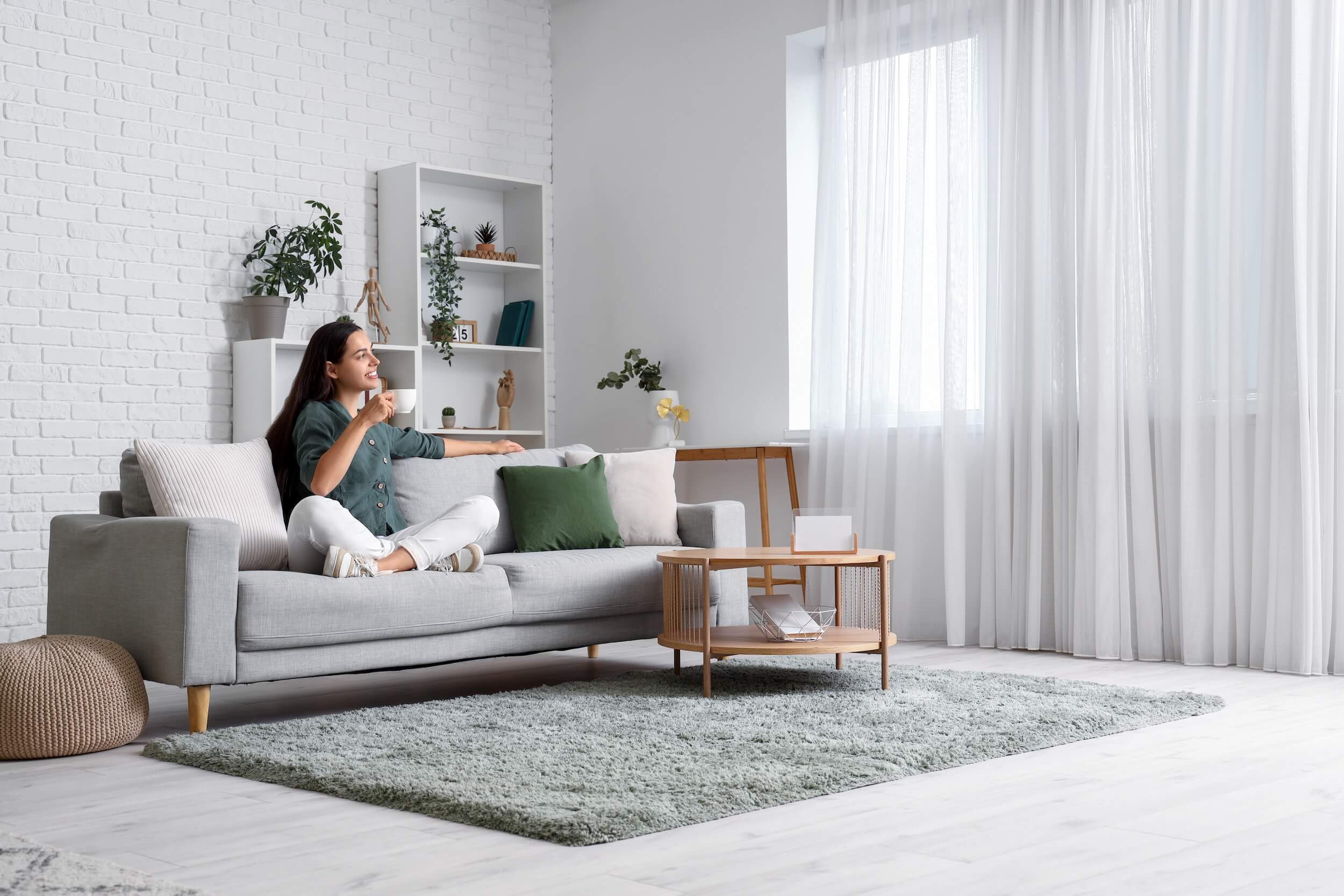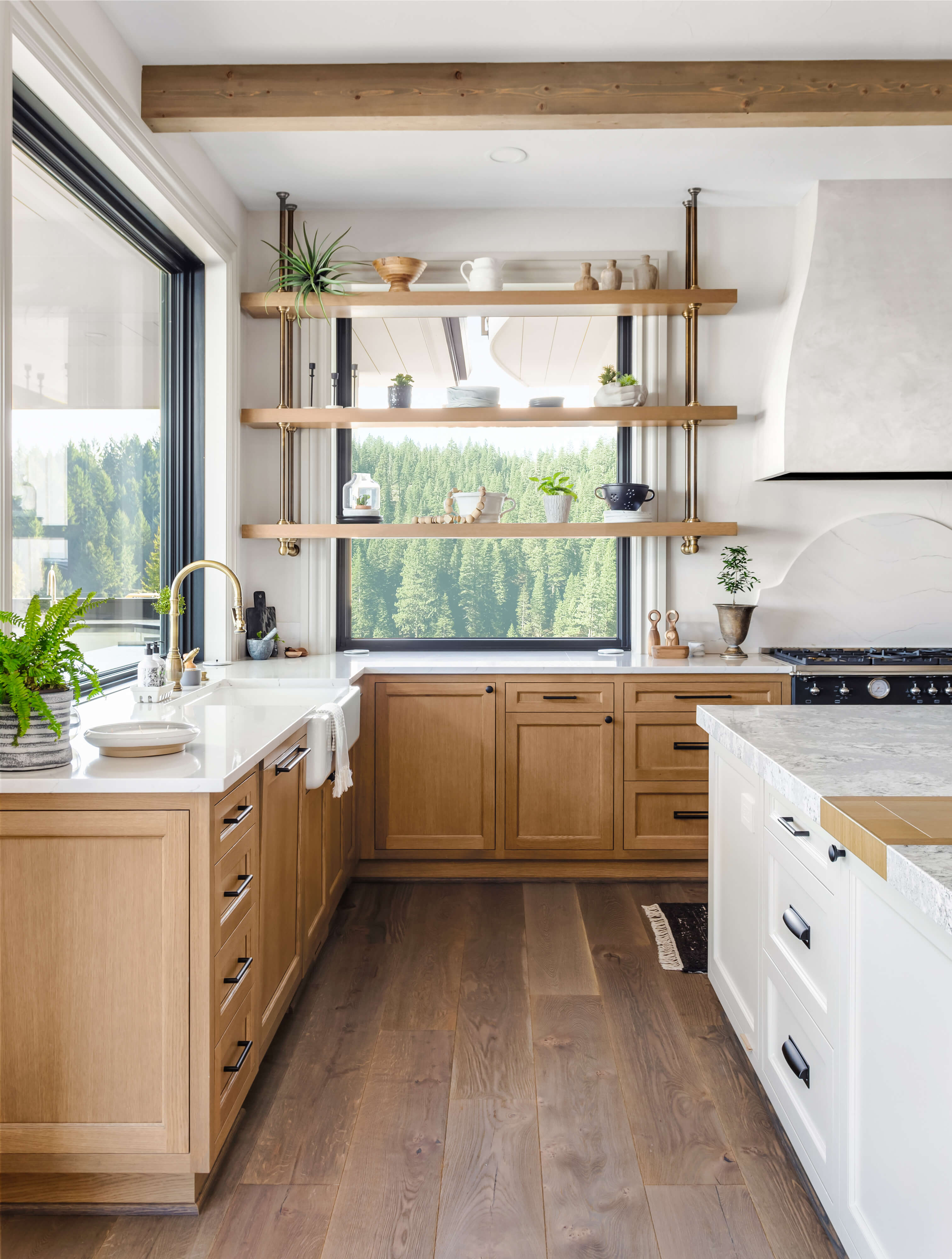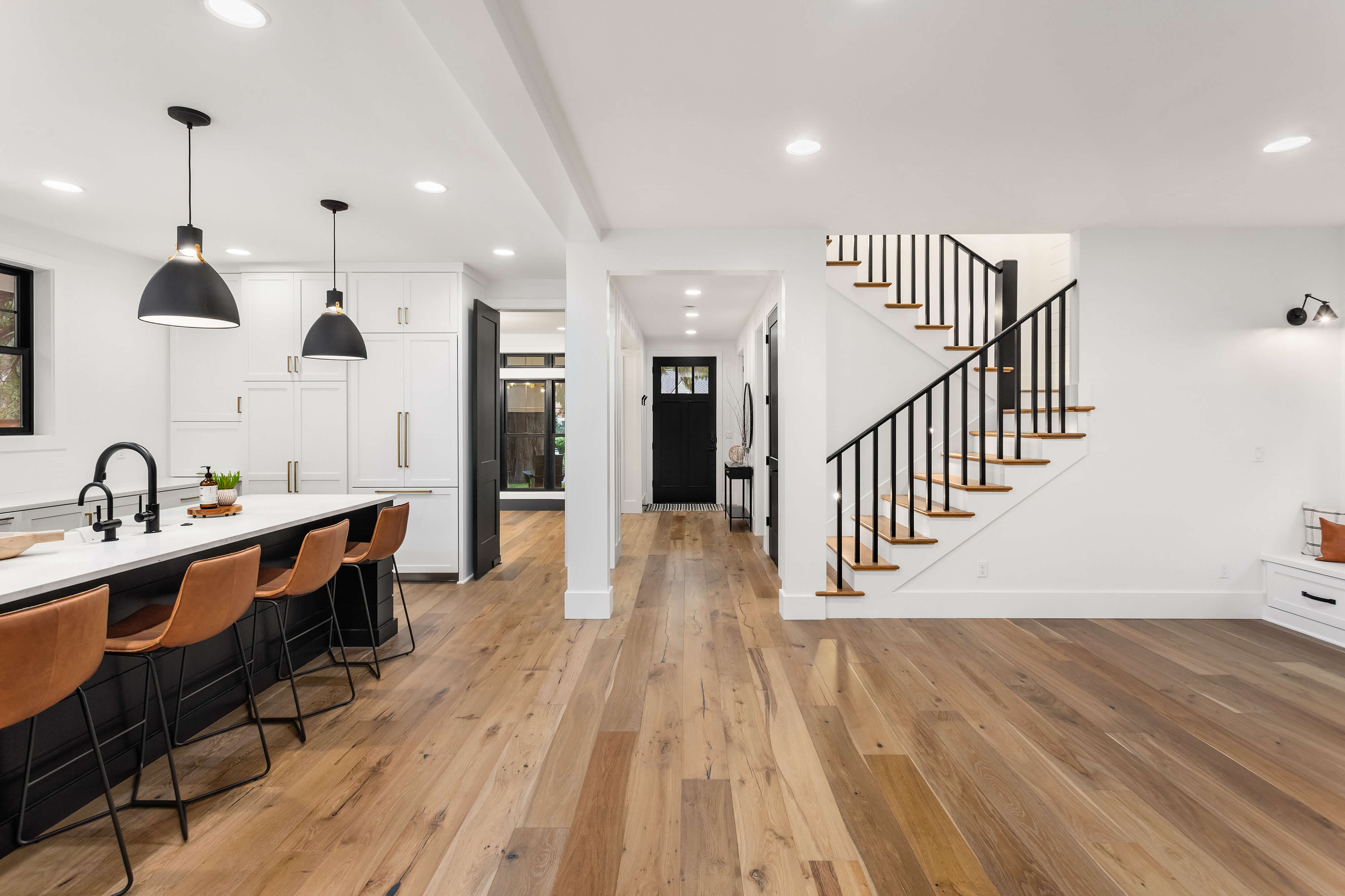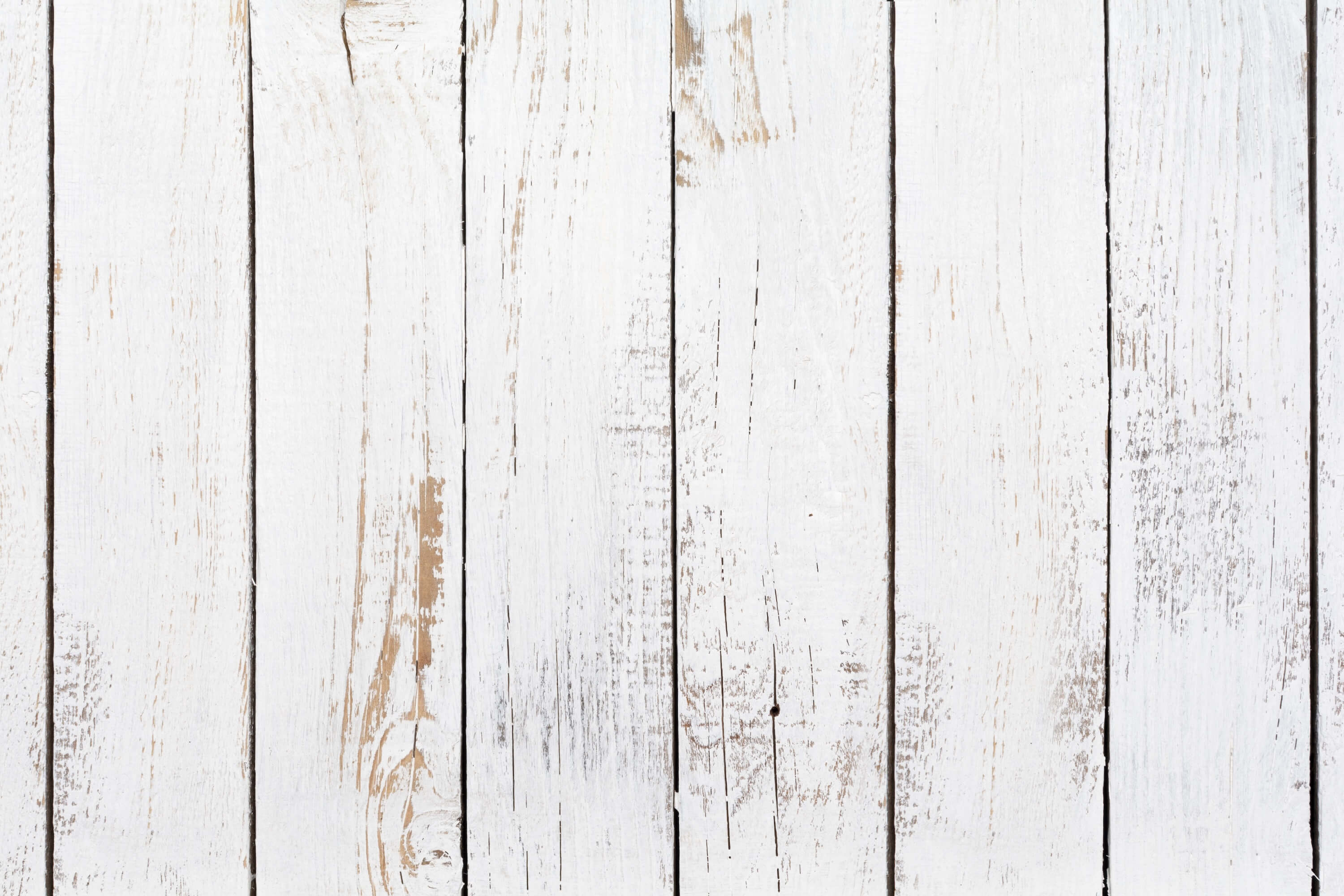Stark white surfaces are no longer reserved for the minimalist. Although purely white shades can help add sleek elegance to a project, there are so many ways to get creative with white finishes. Depending on how you style them, such textures can really elevate and personalize your project’s appearance.
Let’s dive into how you can use white wood textures and other light finishes to amplify your design as you apply the final touches.
Warm Up to White
White offers clean versatility, giving plenty of opportunities to highlight specific aspects of your project. However, when you opt for a white finish, balance is key. Diversifying textures keeps spaces visually balanced—particularly in all-white or mostly-white settings.
White wood, for example, is classic and simple, with dynamic undertones that can be adapted to virtually any design style. We’ll go more into white wood undertones and how you can achieve the ideal look for your project using white textures later. Whether you’re going for coastal, rustic, contemporary, or something in-between, the right finish options mean your design possibilities are endless.

Basic Tips for Applying White to Wood and Other Surfaces
Not every shade of white is the same, so how do you know you’re going with the right one? The following tips offer some insight into finding the perfect white finish for your project:
1. Understand undertones to pick up the right shade.
Be sure to identify the surface’s undertones before selecting a white finish, particularly for wood. Very few, if any, white paints are pure white, as they always carry cool or warm undertones that can be brought out with various finishes. Even subtle undertones can dictate the direction of the project’s design and overall appearance.
2. Determine light quality.
This tip mostly pertains to using white as a color in interior room design (walls, floors, etc.), but can also apply to any white finish exposed to sunlight (e.g., outdoor projects or exterior walls). Selecting the right white paint depends on the type and amount of light the room receives. Although natural daylight tends to be forgiving for white surfaces, artificial light can give an otherwise pleasing room a cold and clinical atmosphere.
3. Try to match grain, color, or texture.
There are no rules or limits to creativity, but it helps to have an idea and maybe even some inspiration for where you want to take your project. “Matching” design elements looks a bit different for everyone, but coordination is key to tying everything together. If you’re brainstorming how to use white finishes to make your design pop, try these suggestions on for size:
- Going for a fresh, all-white look? Incorporate a handful of different white textures (add a plush area rug, white metal, and white brick or stone).
- Going for a more rustic style? Use different shades or stains of the same family of wood throughout (mix white oak, dark oak, and black oak finishes).
- Going for something more modern? Combine glossy whites and blacks for surfaces (supplement with mirrors and stick to minimalist accents).
Regardless of what reflects your personal style, decide on a visual direction and commit to it. Whether you’re refinishing exterior siding or debating the design of a deck, consider how the finish you choose will help tie individual elements together.
Ideas and Inspiration for White Wood Projects
By now we know that white is far from boring; its versatility offers limitless design possibilities. But what’s the best way to use white with wood and other textures in order to really liven up a project?
Contrasting White and Wood
When styled correctly, white and wood make the perfect pair. Whether you’re contemplating a new wall color or refinishing a piece of furniture, pairing your favorite wood grain with the right white finish can truly elevate the final appearance of your project. If you’re looking for some inspiration for combining white and wood, here are a few classic interior design approaches for balancing contrast:
- Dark, natural wood rafters against a stark white ceiling help add dimension and a bit of elegance.
- Pairing a white vent hood with dark countertops and cabinetry makes for a modern and sleek kitchen design.
- Lots of pale wood finishes combined with warm whites can give spaces a more rustic or nautical feel.

Where to Use White Finish
What surfaces are the perfect canvas for a clean white finish? Apart from your standard white walls and ceilings, white in general is great for brightening up a room with few windows or little natural light. This is why white is often used in bathrooms, hallways, and basements. Many homeowners employ white pine for use outdoors because it’s very durable, with great resistance against fire and termites.
In terms of white or pale types of wood, white oak textures and the aforementioned white pine are very popular, along with maple and beech for furniture, doors, trims, or skirtings. These species are naturally cream or light in color. If the wood used is naturally brown or dark in color, lightening it by bleaching the wood may be an option, but be sure to research the best method for your desired result.

Incorporating Other White Textures
Many people might say that white is boring, but white has endless creative potential. White wood textures are only the beginning. Consider how you can manipulate plain flat white by using dynamic patterns and textures such as the following:
- Shag or fur area rugs, throw pillows, and blankets
- Geometric monochrome accent walls
- Weathered driftwood furniture or decor
- Surfaces with washed or distressed white paint textures
- Features with marble, white brick, or light stone
Once again, strategically combining textures helps promote visual balance and adds depth without clashing colors. Although white undertones and solids can certainly clash, diversifying white textures allows you to experiment with complementary shades and tones, playing on the specific features of a project you want to highlight.

Dial Up Your Design With White Texture
No matter how you choose to incorporate a white finish, make sure you approach your project with the right plan. Whether you’re trying to decide which white to use for interior walls or laying down white oak flooring, ensure the finish you opt for supports your ultimate vision. Browse various color collections, gather inspiration, and explore the latest design trends to see what techniques and solutions work best for the style you’re going for.
Adding the right shade or an aesthetic white texture can create the perfect amount of visual balance in your design. Don’t hesitate to reach out to our coating experts for additional application guidance or product recommendations.



.png?width=960&length=960&name=Blog%20%2311%20Exploring%20Techniques%20for%20Wood%20Grain%20Fillers%20(1).png)
